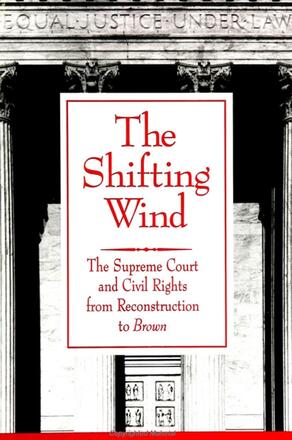
The Shifting Wind
The Supreme Court and Civil Rights from Reconstruction to Brown
Alternative formats available from:
Examines the significant role played by the U. S. Supreme Court in shaping race relations and affecting civil rights in the period between the end of the Civil War and the 1954 Brown decision.
Description
The Supreme Court played a decisive, and not always positive role in molding the relationship between race and rights during the ninety years between the end of the Civil War and Brown. Brown marked a turning point in the meaning of race in American society. Its contribution to the erosion of the moral legitimacy of segregation helped impel the civil rights movement toward major legislative success, culminating with the Civil Rights Act of 1964.
John R. Howard is Distinguished Service Professor in the Division of Social Sciences at the State University of New York at Purchase, and is a practicing attorney. He is the author of The Cutting Edge: Social Movements and Social Change in America; coauthor of Life Styles in the Black Ghetto; and coeditor of Urban Black Politics.
Reviews
"This is a book written in sprightly and, often, moving prose about the role of the high court in pushing—or subverting—civil rights, particularly as such pertains to African Americans. It analyzes the leading cases ranging from the Slaughterhouse cases to Plessy to Buchanan to Brown. It is difficult to conceive of a more significant topic than this one.
"What I like most about this work is that it provides a sweeping overview of leading court cases, while providing microscopic detail about the individual Justices, their thought processes, the parties to litigation, etc. In other words, it provides the best of 'macro' and 'micro' analysis. " — Gerald Horne, author of Black and Red: W. E.B. Du Bois and the Afro-American Response to the Cold War, 1944-1963
"Professor Howard's engaging approach to the study of the role of the Supreme Court in civil rights policymaking will undoubtedly set a standard in the literature. Specifically, his focus on the Justices' perceptions and attitudes about race, the impact of American political and social thought at the time, as well as the utilization of small group theory in understanding judicial behavior, is right on target in presenting a complex yet not overly daunting model of the impact and role of the Supreme Court in protecting the civil rights of African Americans. The book is thorough and well written. " — Barbara L. Graham, University of Missouri-St. Louis